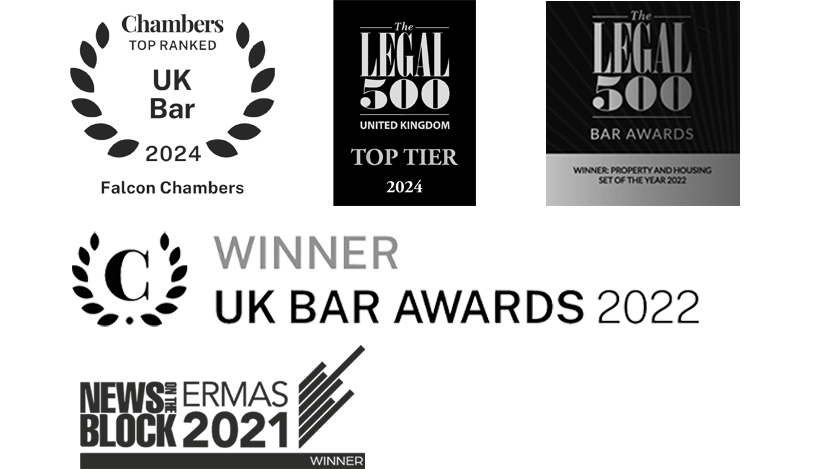Lowe v William Davis [2018] UKUT 0206 (TCC)
Lowe v William Davis [2018] UKUT 0206 (TCC) – Case Summary
This decision kills off doubts, set running in Murdoch v Amesbury [2016] UKUT 3, about whether the First-tier Tribunal (Property Chamber)(Land Registration) has jurisdiction to determine disputes about the true line of a boundary when a determined boundary application is referred to it. Mr Justice Morgan, sitting as a judge of the Upper Tribunal, confirmed that it did.
Determined boundaries
The vast majority of properties are registered with “general boundaries” only. This means that the title plan cannot be used to determine the precise line of the boundary between plots. However, the Land Registration Act 2002 does provide a procedure, in section 60, for the determination of precise boundaries. An application must be accompanied by a plan identifying the exact line of the boundary claimed, compliant with Land Registry requirements.
The factual background
William Davis is a well known residential developer. It acquired a site near Loughborough from a farmer. In due course a number of the residents whose gardens backed onto the site moved back their fences so as to encroach onto the development site. Although the other residents eventually agreed to move their fences back, Mr and Mrs Lowe, who had the benefit of legal expenses insurance, did not. William Davis applied to Land Registry, under Land Registration Act 2002 s 60, for a determined boundary. In accordance with the rules, they supplied a plan prepared by a surveyor. The plan showed the centre line of a former hedge. It was William Davis’ case that the centre line formed the boundary, although the surveyor drawing up the plan had drawn a straight line representing that line, rather than following the slightly curving line the centre line of the hedge actually took.
Mr and Mrs Lowe objected. They said the boundary lay on the far side (from their house) of both the hedge and a ditch which they asserted has been present on the far side of the hedge.
The matter was therefore referred to the FTT.
The Hearing
Mr and Mrs Lowe’s challenge continued to be that the true boundary line was elsewhere. However, the discrepancy between the centre line of the hedge and the red line was revealed as a result of the judge’s questioning of William Davis’ expert. The matter then went part-heard, and, before it came back again, the Upper Tribunal decided Murdoch v Amesbury.
Murdoch v Amesbury
In the FTT, the judge held that the Murdochs’ application for a determined boundary failed (because the plan did not show the line claimed with the required degree of accuracy), but went on determine where the true location of the boundary was. The Upper Tribunal held that the FTT had had no jurisdiction to make this finding.
Lowe v William Davis
By the time the matter came before the FTT again, there had been a further relevant decision of the Upper Tribunal, in Bean v Katz (UT/2015/0042) which suggested that if the objection relates to the true line of the boundary, the FTT does have jurisdiction to determine that issue.
The FTT judge held that he did have jurisdiction to determine the location of the boundary, notwithstanding his conclusion that the plan did not satisfy the requirements. Mr and Mrs Lowe appealed on this (and other) points.
The judge held that:
1. A party is entitled to make a determined boundary application if the issue between the parties is where the true location of the boundary is.
2. The FTT has jurisdiction to determine the true location of the boundary is such a determined boundary application is referred to it.
3. Its jurisdiction is determined at the point of the reference, and does not disappear until the FTT is functus because it has made its final order. It is a matter for the FTT’s case management discretion whether to stay its proceedings and direct the parties to commence Court proceedings to determine the location of the boundary, or to determine it itself. Equally, it is a matter of case management discretion whether to determine all issues which might arise in determining the matter if it could reach a decision without doing so.
4. “The matter” is the issue which had been referred to the Tribunal. The Judge did not need to engage with whether “the matter” is defined by reference to the terms of the objection only, as Bean v Katz suggested, or whether “the matter” includes all constituent elements of the application, whether or not put in issue by the objector, as appears to be suggested in Jayasinghe v Livange [2010] 1 WLR 2106.
The judge left open whether a finding as to the location of the boundary which did not result in any order was a finding which gave rise to an issue estoppel, but commented that this might well be of importance in determining whether to direct a party to commence Court proceedings and in determining whether permission to appeal should be given in the future.
Back to news listing


